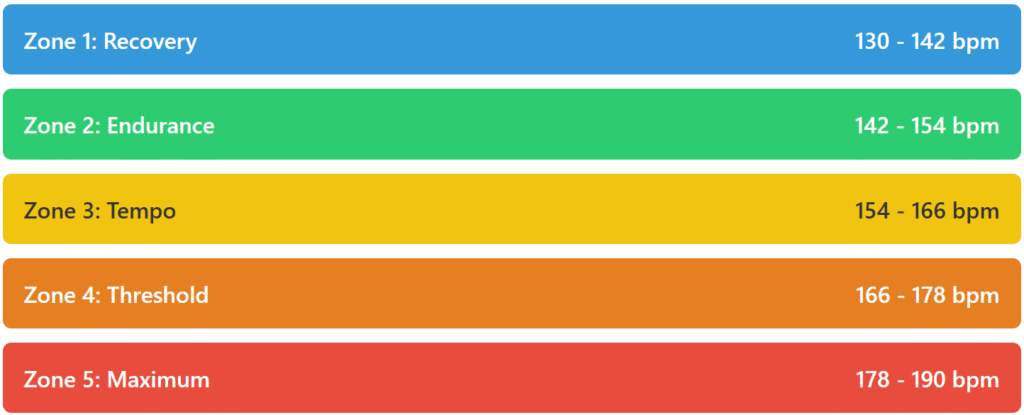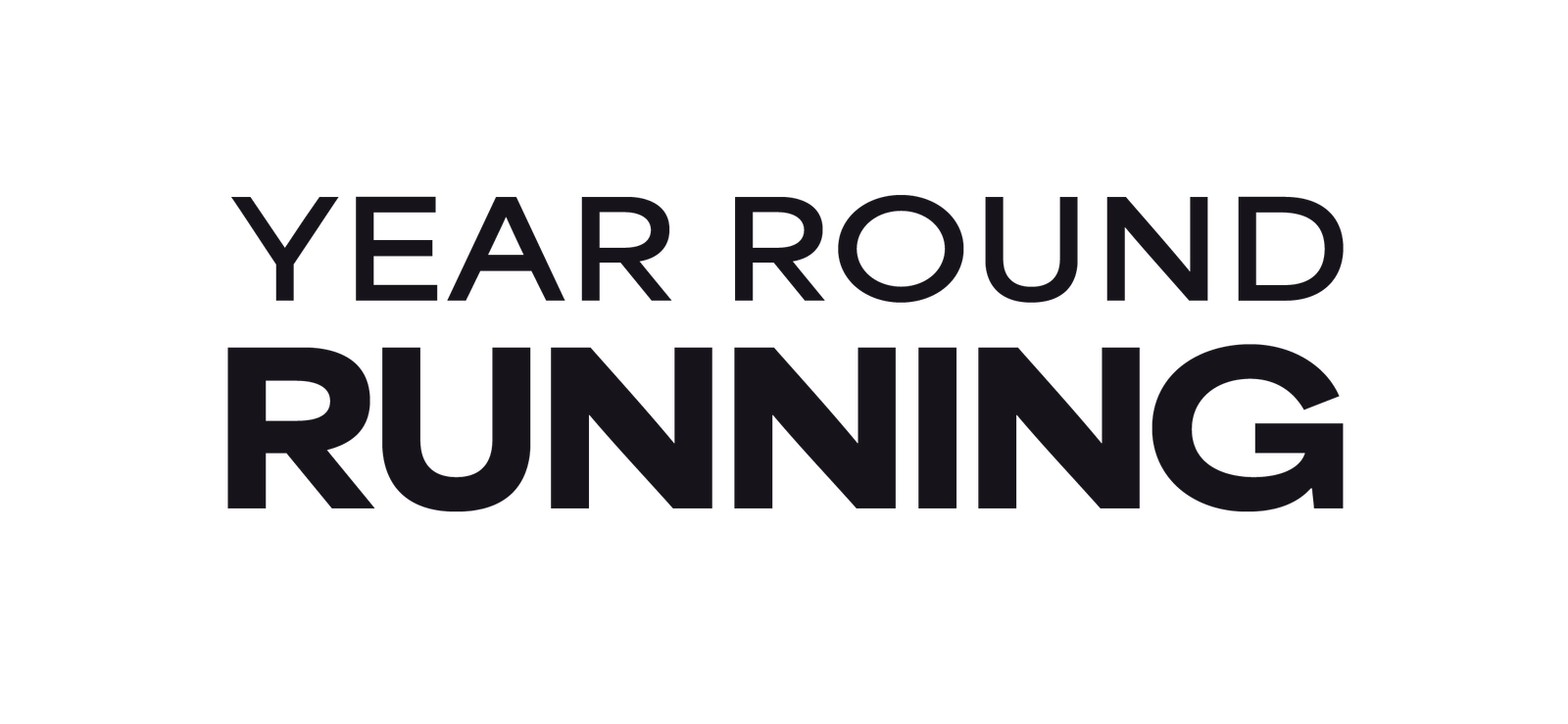You Might Be Training In the Wrong Heart Rate Zones
Running in the right heart rate zones can be crucial for staying healthy and getting the most out of your training, especially when preparing for a race. As I dive deeper into the running world, I keep seeing the same thing: people calculating their zones using only the Percentage of Max Heart Rate (%MHR) method, as if it’s the golden standard.
While it is simple and gives a decent indication, it’s also arguably the least accurate and in many cases, misleading.
Before diving deeper in the topic, it’s worth noting that heart rate zone training isn’t the only way to improve as a runner, especially if you’re just getting started. For beginners running low weekly mileage, focusing on consistency, running form and perceived effort often matters more than precise heart rate training.
In this article, I want to give you a clearer understanding of heart rate zones and help you estimate yours more accurately, so you can train more effectively and perform better.
By Quentin van Bentum • April 2025

A quick heads-up: unless you undergo lab testing or do more accurate running tests (like a Laboratory VO2 Max Test or lactate threshold testing), your heart rate zones will always be an estimate. My goal is to show you how to get the best possible estimation using relatively easy proven methods, no lab required.
The common ways of measuring your Zones.
When I first started tracking my heart rate zones, I relied on the %MHR formula like most runners do. But no matter how easy I ran, I struggled to stay in Zone 2, even though the effort felt light and I could still hold a conversation. It was confusing and frustrating and that’s when I decided to dig deeper into how heart rate zones really work.
Most runners rely on one of two common methods to calculate their zones: the % of Max Heart Rate or the Karvonen Formula. While there are better and more advanced methods, these two are the most simplistic and are usually used in apps like strava, garmin, polar etc. So let’s dive into both methods and learn how they work.
To start you will need to know your max HR for both methods. While a common way to estimate this is to subtract your age from 220, this has been proven to be relatively inaccurate, but if you haven’t measured your actual max yet, you can use it as a baseline.
However it is recommended to use a more refined formula like the Tanaka Formula (MHR = 208 − (0.7 × age)) or even better, test your actual max HR to get more accurate results.
Actual measurements of your max HR during training are way more accurate than any Formula and are crucial to improve your zone accuracy.
You can determine your max HR with a running watch or a heart rate chest strap, which is even more accurate. My current go-to watch is the Polar Pacer, it’s accurate, affordable, and you can pair it with a chest strap like the Polar H10 chest strap if you want a higher level of precision.
While my current go-to brand is Polar, brands like Garmin and Coros are also great options!
The Percentage of MAX HR method.
The percentage of MAX HR method is the easiest and most used way to estimate HR Zones and the one you often see spread all over social media and blog posts. Here is how it works:
| Zone | Intensity | % of MHR | Example (MHR = 190 bpm) |
|---|---|---|---|
| 1 | Recovery | 50–60% | 95–114 bpm |
| 2 | Aerobic/Endurance | 60–70% | 114–133 bpm |
| 3 | Tempo | 70–80% | 133–152 bpm |
| 4 | Threshold | 80–90% | 152–171 bpm |
| 5 | Maximum | 90–100% | 171–190 bpm |
While this is one of the most common ways to measure the zones due to the simplicity, it is also known as one of the more inaccurate ones. This is mainly due to there being no consideration of individual fitness level which causes the results of this to be inaccurate for many people. However for some people it may give accurate results and it shouldn’t be completely written off. But in my experience and opinion there is a better way of estimating your zones, using the Karvonen Formula.
The Karvonen Formula.
The Karvonen Formula is another common way to estimate Heart Rate Zones, and it is proven for many to be a significantly more accurate way to measure your zones than just using the percentage of Maximum Heart Rate. This method takes into account your Resting Heart Rate (RHR), which makes it more personalized to your fitness level.
This is what the formula looks like:
Target HR = ((Max HR − Resting HR) × %Intensity) + Resting HR.
The intensity zones correspond to the following ranges:
- 50–60% intensity → Zone 1 (Very Light): active recovery and circulation
- 60–70% intensity → Zone 2 (Light): aerobic base building, fat burning
- 70–80% intensity → Zone 3 (Moderate): aerobic endurance, tempo effort
- 80–90% intensity → Zone 4 (Hard): lactate threshold, high-intensity effort
90–100% intensity → Zone 5 (Very Hard): VO2 max, short bursts of peak performance
As you can see, the intensity percentages are the same as in the %MHR formula. But what makes the Karvonen method more accurate is that it first subtracts your resting heart rate from your maximum. This gives a better picture of your “active range”, the part of your heart rate that actually changes with exercise.
The percentages are then applied to that active range, and finally, your resting heart rate is added back in. This makes the zones more tailored to your fitness level and how your heart really responds to training.
Here is an example what the Zones look like for someone with a 190 Max HR and a 70 Resting heart rate, using the Karvonen formula:

Heart Rate Zone Calculator.
I created this chart using my free Heart Rate Zone Calculator, which you can try out on this website. Just enter your max and resting heart rate, or let the tool estimate them for you based on your age and fitness level.
👉 Try the Heart Rate Zone Calculator here
Keep in mind that while the Karvonen formula tends to be more accurate for many people, it might not work perfectly for everyone. The most precise way to determine your zones is still through lab testing methods like VO2 max or lactate threshold testing. But for everyday training, Karvonen offers a solid and personalized starting point.
How to optimize your zones further.
While these formulas give you a good base of your zones, it’s crucial to remember they are still estimates. To really dial in your zones, you need to connect with how your body is feeling. This is where Rate Perceived Exertion (RPE) comes in. Think of it as a subjective scale of how hard you feel you’re working (often on a scale of 1-10). Combine your heart rate data with your RPE – a Zone 2 run should feel “easy” and conversational, while a Zone 3 effort should feel “comfortably hard” where full sentences become a struggle.
Another simple yet powerful tool is the “talk test.” As a general guideline:
- Zone 1: You should be able to sing a song. RPE: 1-2
- Zone 2: You can hold a comfortable conversation. RPE: 3-4
- Zone 3: You can speak in short sentences. RPE: 5-6
- Zone 4: Speaking is difficult. RPE: 7-8
- Zone 5: You can barely utter a few words. RPE: 9-10
By adding these tests to some of your runs, you can further optimize your zones and potentially adjust them even further to get more accuracy!
Heart Rate Zones for Beginners: How Much Do They Really Matter?
Heart rate zone training is a powerful tool, but it’s not essential for every runner, and in some cases it can even be counterproductive, especially for beginners. If you’re running just a few times a week or building up your base with low weekly milage, focusing on easy, conversational-paced runs is often more effective than stressing about exact heart rates for each run.
At this stage, consistency, gradual progress, and avoiding injury matter far more than worrying about your zones all the time. As your volume increases and you start adding intensity, that’s when heart rate data becomes much more useful.
On top of that, as a beginner, you might not yet have the aerobic base to consistently stay in specific zones or keep your heart rate under control. This can lead to running much slower than necessary, even when the effort still feels easy. While slow running is great for building endurance, being overly strict with heart rate targets early on might hold you back from training at a pace that’s both safe and more productive.
The takeaway.
While the simplicity of the Percentage of Max Heart Rate method makes it a widely adopted starting point for determining training zones, it’s often very inaccurate. By neglecting individual fitness levels that can be reflected in resting heart rate, it can lead to inaccurate and potentially ineffective training.
The Karvonen Formula offers a significant improvement by including this crucial personal metric, providing a more personalized and more reliable estimation of your heart rate zones.
However, remember that even the Karvonen method is still an estimate. To optimize your training and understand your body’s response even more you can try integrating subjective measures like Rate of Perceived Exertion and the talk test alongside heart rate data.
That said, if you’re a beginner with low mileage, strictly sticking to heart rate zones may not be necessary yet, focusing on consistent, easy-effort running often delivers more benefit early on.
Ultimately, the most effective approach involves understanding the limitations of the methods and using them as guides to better connect with your body’s signals, leading to smarter training and improved performance during your runs.
Want to Train Smarter With Accurate Heart Rate Zones?
Pair this heart rate zone guide with a personalized running plan that aligns with your fitness level and training goals.
Try the Free Running Plan Generator, built for runners of all levels, from 5K to full marathon
Trusted Running Watch Brands
If you want more accurate heart rate data and better training insights, these brands are trusted by runners of all levels:
- Polar – Excellent heart rate tracking and training features.
- Garmin – One of the most popular choices among runners.
- COROS – Lightweight, long battery life, and great value.
- Suunto – Built for the outdoors. Rugged design with solid GPS and altitude tracking.
Apple – Ideal for casual runners who want all-in-one convenience and app flexibility.
Most of these brands support Bluetooth chest straps for even more precise zone tracking, a smart upgrade if you train by heart rate.
Also Check out these other Free Running Tools
These tools will help you prepare better for your next race.
- 🏃 Pace Calculator – Convert pace, speed, and time with ease
- 📈 Race Time Predictor– Set goals with time estimates
This post contains affiliate links. If you click through and make a purchase, I may earn a small commission at no extra cost to you. I only recommend products I personally use and trust. Thanks for supporting the blog!
